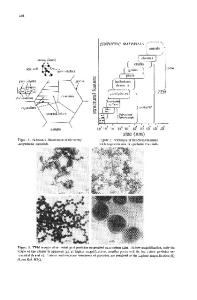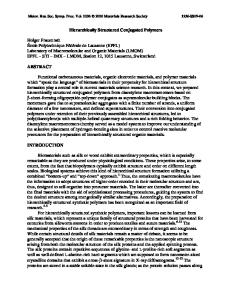A Hierarchically Structured Model Composite: A Tem Study of the Hard Tissue of Red Abalone
- PDF / 4,046,037 Bytes
- 9 Pages / 420.48 x 639 pts Page_size
- 51 Downloads / 239 Views
A HIERARCHICALLY STRUCTURED MODEL COMPOSITE: A TEM STUDY OF THE HARD TISSUE OF RED ABALONE JUN LIU, MEHMET SARIKAYA, and ILHAN A. AKSAY Department of Materials Science and Engineering, and Advanced Materials Technology Center, Washington Technology Center, University of Washington, Seattle, WA 98195
ABSTRACT The structure and crystallography of the nacre of red abalone, Haliotis rufescens, was studied by transmission electron microscopy imaging and diffraction. We found that the nacre structure is based upon hierarchical{110) twinning in aragonite with the following organization: (i) first generation twins between platelets having incoherent boundaries, (ii) second generation twins between domains having coherent boundaries within a given platelet, and (iii) nanometer-scale third generation twins within domains. Since the aragoniteplatelets nucleate and grow as separate crystals, this long-range crystallographic relationship between the inorganicunits of a biological hard tissue indicates that the nucleation and growth process of crystals may be mediated by the organicmatrix and that the organictemplate structure may also be long-range ordered. We propose a superlatticestructure based on the possible twin variants and suggest that the organic matrix structure, or the arrangement of nucleation sites, is compatible with the superlattice. Multiple tiling based upon this superlattice allows all of the crystallographicand morphologicalplatelet configurationsobserved in nacre.
INTRODUCTION 16
Nacre is a laminated ceramic-polymer composite material found in mollusk shells. - It has a highly ordered structure on a continuous scale1 from the nanometer to the millimeter and has unique mechanical properties, such as high fracture toughness and strength. 3"4 Understanding its structure, in particular the growth process and the interrelationships between the microstructure and properties, is valuable to biological sciences, materials science and engineering, and the electronic industry. Previous studies have suggested that the formation of the inorganic crystals was regulated by the organic matrix through epitaxial growth. 6-9 But to date neither the structure of the inorganic phase with its detailed architecture nor the organic phase have been fully understood. In nacre, the inorganic phase, CaCO 3 in the aragonite form (Pmcn, No. 62), and the organic phase, a mixture of proteins and polysaccharides,8 -9 are arranged in a "brick and mortar" microarchitecture (Figure 1).1-5 The aragonite platelets, with hexagonal or square faces, are about 5 j&m in edge length and 0.25 to 0.5 [tm in thickness, and the organic phase is about 100-200 A thick. 10 Previous diffraction studies 11 illustrated that the platelets on a given layer are aligned in the c direction of the orthorhombic unit cell of the aragonite lattice. It was further suggested that the platelets are arranged in a "mosaic pattern" without definite crystallographic 2 relationships between them in the a-b plane.1 Similarly, it was suggested that only local ordering existed
Data Loading...











